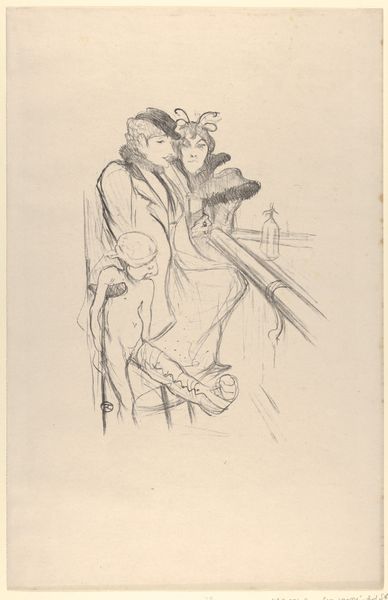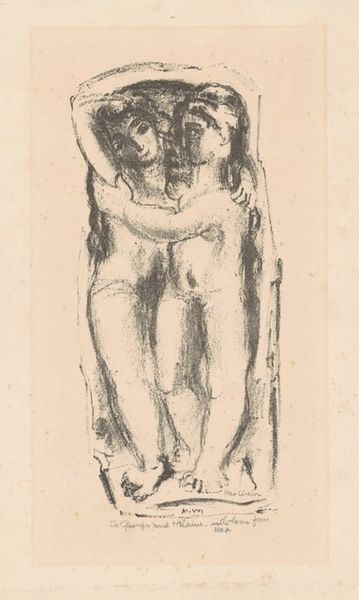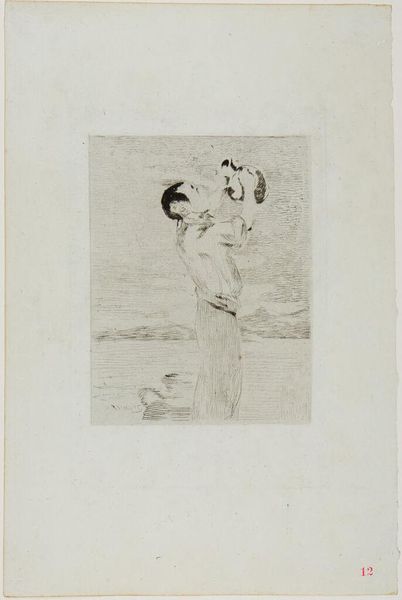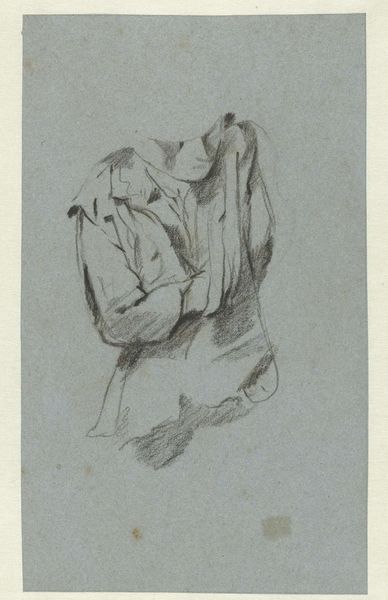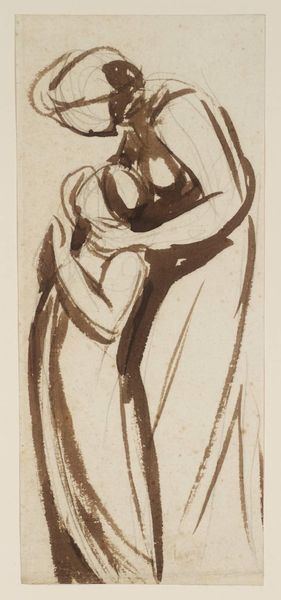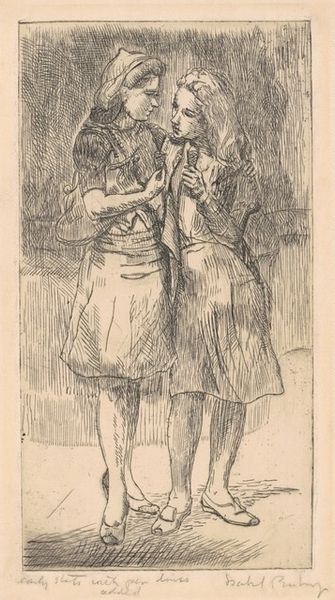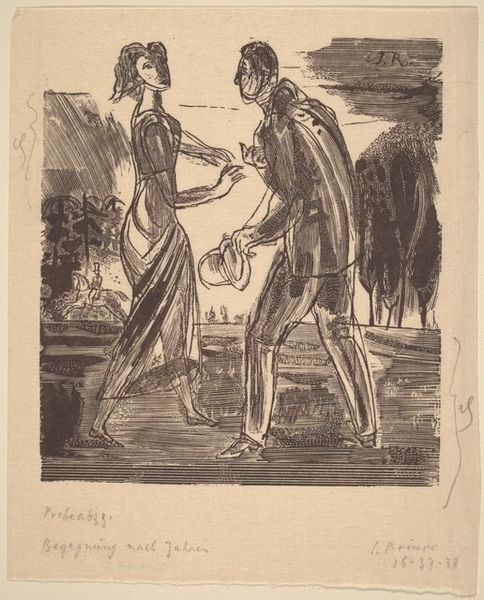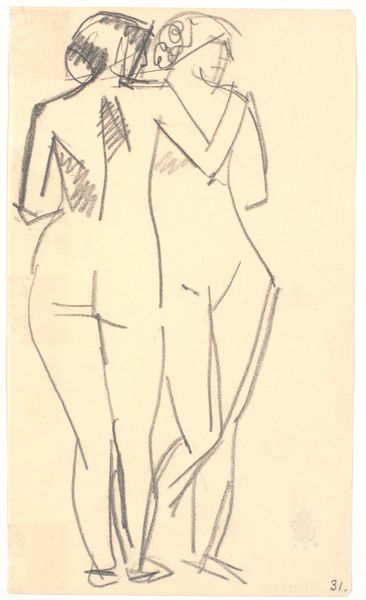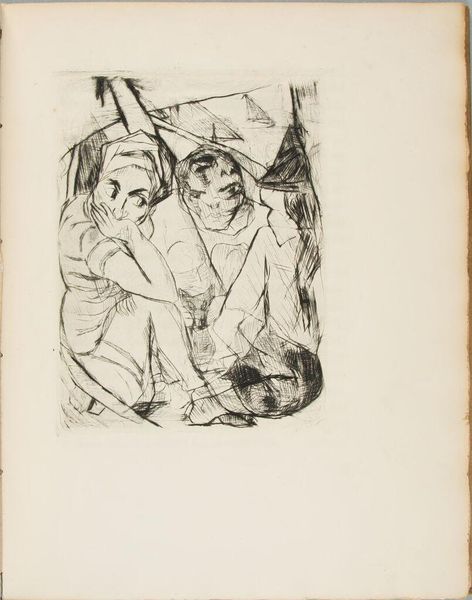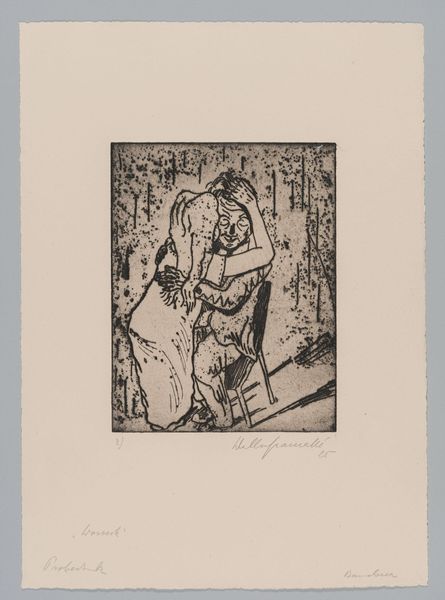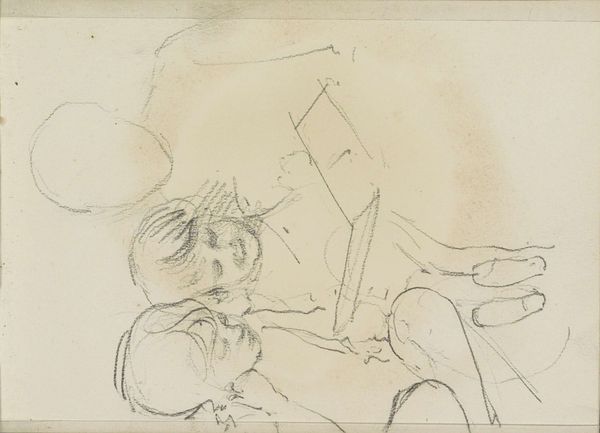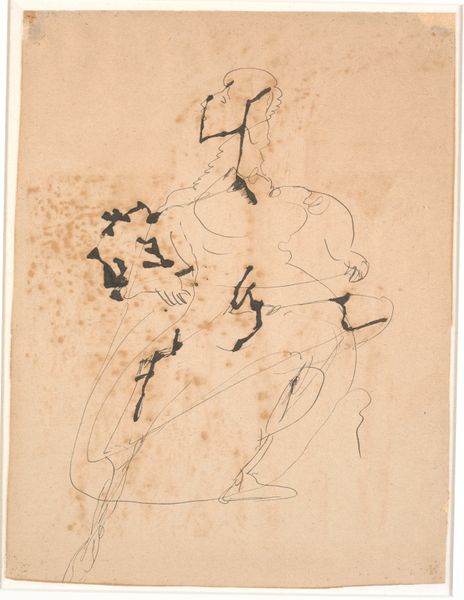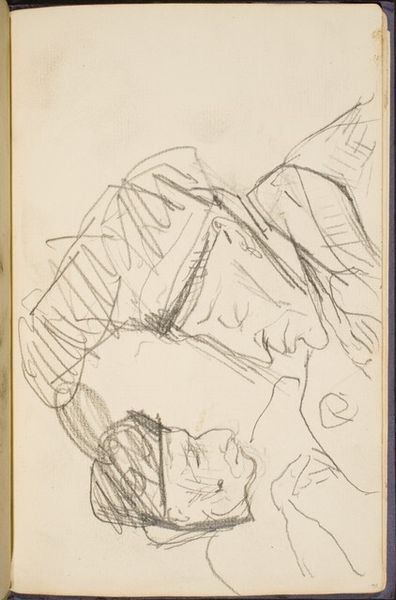
Copyright: National Gallery of Art: CC0 1.0
Curator: Marc Chagall's etching, "The Lovers," created in 1922, invites us into his signature dreamlike world. It presents an intimate encounter against the backdrop of a detailed, almost theatrical, landscape. Editor: The composition initially strikes me as quite bizarre—the upside-down male figure immediately commands attention and injects this dream-like disquiet into what would otherwise be a very mundane and pleasant, romantic scene. Curator: Chagall often uses such unconventional perspectives to express emotional states. Consider his personal history during this period; exiled to Berlin then Paris after the Russian revolution, this etching embodies a sense of displacement and upheaval. Editor: Yes, that contextual layering certainly adds depth. Looking purely at the formal aspects, notice how the intricate network of lines that defines the landscape contrast with the relative abstraction of the figures themselves. Curator: Exactly, the city beneath hints at a traditional community, while the embracing figures could symbolize both longing for that stability, or maybe the new life in flux, but remember this work comes from a period heavily impacted by post-war sentiments. Editor: And note how this lack of definition actually directs the focus on their connection, as opposed to the individual characteristics. What I also appreciate is how the shoes appear to merge, adding another symbolic layer. They may literally symbolize the merging or “walking in each others shoes” within the act of romantic union. Curator: Those heavy boots on top, certainly weighted themes are present! Consider the history of displacement and cultural disruption during this era in European Jewry, where perhaps those shared paths come fraught with difficulty. Editor: Looking again to this union and the way Chagall contrasts it with that complex background, maybe this etching's power lies in showing us love is possible against such great odds, what do you think? Curator: Yes! Through understanding the historical context, and also seeing what our attention drawn into, the work, we realize the enduring, defying nature of personal connections is present. Editor: Right. Examining the composition through the lenses of cultural context provides a whole deeper of meaning beyond simple figures. Curator: A close look shows Chagall does just that, as the work embodies personal history, but also his society.
Comments
No comments
Be the first to comment and join the conversation on the ultimate creative platform.
